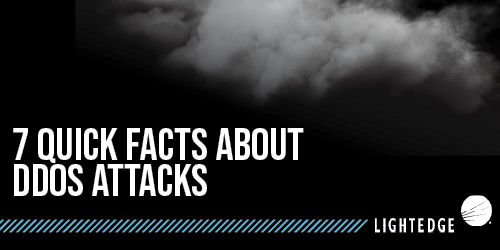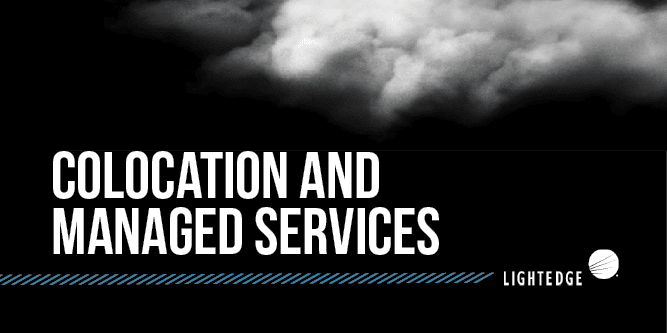Cloud Migration Strategy: 3 Tactics and Other Best Practices to Get You Started
September 20, 2018

Lightedge
Author

Your organization has finally seen the potential that cloud platforms have to offer. Moving away from traditional IT to cloud computing through a cloud migration strategy is a jump in the right direction towards efficiency and scalability. Now that your business is ready to get back to its core proficiency and leave the IT to the experts, what’s next?
The major decision has been made, it is time to start mapping out an effective cloud migration strategy. What are the best practices to consider? What cloud migration challenges should be on your radar? What are the best cloud migration tools to help achieve your specific business objectives? These are the questions that should be addressed when building out your cloud migration strategy. Thankfully, the right cloud hosting provider should be able to provide answers, expert advice, and even a roadmap to your company’s target cloud migration strategy.
In case your colleagues need some final convincing before making the leap to cloud, the Cloud Migration Survey is here with the top cloud benefits to consider:
- Higher availability and scalability
- Accountability
- Cost savings
Now that we are all on the same page with the perks of moving to cloud, here are three tactics and a list of best practices to bolster your migration strategy for greatness:
1. Choose the Right Type of Cloud for Your Business
Selecting the right cloud environment is the first step in a migration strategy. While public, private, and hybrid all have their unique benefits, determining the best landscape to achieve your business objectives is the critical first step on the cloud migration path. Here are the primary different cloud environments to consider:
Public Cloud: Public Cloud based on the standard cloud computing model, in which a solutions provider makes resources, such as VMs, applications or storage, available to the public over the internet. Public cloud providers like AWS or Google provide a pay-per-usage model that can get pricey if not used properly or monitored continuously. Due to the lack of control and the multi-tenancy environment, highly regulated industries can be a poor fit for the public cloud when it comes to their most valued assets.
- Pros: Increased scalability and flexibility, no hardware investments
- Cons: Higher security risk, away from IT’s direct control, lack of trust in shared servers, lack of provider support
Private Cloud: A cloud infrastructure operated solely for an individual organization. It may be managed by the organization or a third-party solutions provider, and may exist on-premises or off-premises. A private cloud environment offers more control, and has higher standards for security and compliance due to its single-tenancy nature. This is a popular choice for highly regulated industries like finance and healthcare.
- Pros: Offers high security and customization, reliable and efficient, lacks the concerns of a shared server, greater control, provider typically acts as trusted partner, greater provider support
- Cons: Requires expert knowledge that the current IT team may not possess if the private cloud is kept on-premises, higher initial outlay but businesses find it balances out and becomes more cost-effective in the long-term compared to the public cloud
Hybrid Cloud: Hybrid cloud is a combination of both public and private clouds. It can maintain independence, while providing collaboration across different platforms.
- Pros: Offers flexibility and cost savings, along with security and data protection
- Cons: The most complex cloud solution to manage and maintain, requires special expertise
2. Simplify Your Cloud Migration Strategy
Developing a robust data migration strategy is worth dedicating valuable time and resources – either internally or externally. After all, server migrations do involve a certain level of risk, if not handled properly. One way to get the right expertise dedicated to building out your cloud roadmap is by partnering with a provider you trust to develop a migration plan that sets you up for success. This not only frees up your internal team to focus on driving business growth in their focused areas, while giving you peace of mind in your journey to cloud.
Experts have found it’s key to not over complicate your cloud migration strategy. When confusion arises, processes can start going awry. If you decide to keep the cloud planning in-house, here are a few ways to simplify your strategy building and ensure a successful implementation.
Map out a Cloud Migration Plan
Before a company can start enjoying the benefits of cloud computing, they need to first map out a cloud migration plan. This plan should identify potential challenges and risks, and then provide actions to mitigate those factors should they arise.
Finding a compliant and secure cloud provider may be the first and most major of the challenges. A cloud service provider should have advanced cybersecurity protection and 24x7x365 support. That combined with purpose-built infrastructure and world-class cloud expertise, ensures that your data is going to the safest possible place.
Communication
Once a cloud migration plan has been solidified, getting it into the hands of trusted team members that are responsible for executing any part of the plan is essential. Be prepared to spend time educating employees about how the new infrastructure will work.
In addition to communicating the cloud migration plan, providing executives with a set of benchmark goals can reduce migration anxiety. These benchmarks can help the migration team stay on course, while giving the leadership team a set of expectations and target timeframe.
All migration decisions should be clearly documented. If you have the right compliant cloud provider, there should be little to no downtime. Regardless, it is important to send company-wide communication on any potential changes, like new IP addresses or URLs to direct traffic towards, for example. It is also important to notify any third parties that have access to your systems.
Embrace Security
Every industry has different standards of compliance and security they aim to meet or are required to by auditors. Despite these differences, compliance standards like SOC reports help to provide an overarching framework for meeting different standards.
Before your cloud migration process begins, your organization should be aware of the cloud regulations that must be followed. These compliance rules are particularly important for those in the healthcare or financial industry.
Whether an organization is regulated by HIPAA or PCI-DSS, it is important to keep proprietary systems private in the migration process. Embracing security should be a major focus in your organization’s cloud migration checklist.
Many cloud providers have these security and compliance measures already in place. Lightedge is committed to assisting with customers’ compliance needs. Our services meet the rigorous standards of both HIPAA and PCI-DSS. We work directly with customers throughout their audits by providing evidence to demonstrate compliance with controls that fall within all Lightedge managed services.
3. Migrate to a Compliant and Secure Cloud
While businesses have a high level of control and customization with private clouds, using services on a public cloud could present compliance challenges. Data that is being migrated must meet certain compliance standards.
Thankfully, cloud hosting providers are starting to focus heavily on helping their customers achieve these guidelines.
Organizations Are Not Compliant Unless their Hosting Providers Are
Recently, regulatory agencies and standards institutions have recognized the value of cloud services. Because of this, new guidelines and compliance updates are continually making the cloud a safer place to store your data.
An example of this includes the additions made to HIPAA. In 2013, HIPAA designated cloud service providers as business associates of covered entities, which means that the cloud service providers must also be HIPAA compliant.
The PCI Security Standards Council also released a document that addresses cloud service providers in a PCI compliance context.
Finding a Compliant Cloud Service Provider
Every organization may have different standards and attest to their compliance in a different manner. This is because organizations may be structured to serve industries differently. Despite organizational differences, compliance standards like ISO 20000-1 and ISO 27001 help ensure there are controls implemented.
ISO 20000-1 & ISO 27001
ISO 20000-1 is the international standard for IT Service Management (ITSM), published by the International Organization for Standardization (ISO) and the International Electoral Commission (ICE). ISO 20000-1 gives cloud service providers a framework to help manage IT, while allowing them to prove they follow best practices.
Mandatory steps for a cloud service provider to become ISO 20000-1 and ISO 27001 certified include:
- Internal audits
- Management review
- Corrective actions
- Documentation review
- Main audit
ISO 20000-1 and ISO 27001 are some of the strictest and hardest to achieve compliance badges that a cloud service provider can obtain. Lightedge is one of the very few cloud service providers in the entire country to be in compliance with both ISO 20000-1 and ISO 27001.
SSAE 18 / SOC
Another overarching compliance standard that applies to most industries includes SSAE 18, or Statement on Standards for Attestation Engagement No. 18. This compliance standard was established to provide application guidance to auditors for:
- Performing and reporting on examinations
- Reviewing processes
- Agreeing upon procedure engagements (including SOC attestations)
SSAE 18 also requires cloud service providers to provide the service auditor with a risk assessment that highlights the organization’s key internal risks. This ensures that the provider’s controls are regularly reviewed, vulnerabilities are addressed, and updates are made to mitigate risk.
Cloud Migration Best Practices
Customers often wonder what some of the best practices are to quickly and confidently move their data to the cloud. Although each business is different and has varying goals and processes, there are certain patterns in migration strategies that ring true for every kind of company. Here is a short list of some best practices:
Identify the Division of Roles and Responsibilities
Being able to clearly identify and communicate the broader team’s roles and responsibilities is paramount. Consider access levels, separation of duties, and decide who is in control of what. Does this job fall on the shoulders of your cloud hosting provider? Is it an internal matter?
A great cloud hosting provider will help to clearly define these roles with an enterprise. Once the division of roles and responsibilities has been made, communicate them broadly. If an unforeseen issue arises, an employee should be able to get a hold of the right person at a moment’s notice.
Outline Who Owns Each IT Application and Which Applications are Being Migrated
Making the distinction of who owns what and where they will be held helps measure the success of your cloud migration. Ultimately this will streamline the entire migration process and planning efforts, while minimizing risk of missing important applications in the process.
This would also be the phase for investigating the proper cloud migration tools. Typically, your hosting provider can act as a guide to educate your company on tools that would work best in their specific situation.
Embrace this Technology Change
Your company’s security and leadership team has already made up their minds to migrate to the cloud. Instead of hesitating and fearing this migration, adjust your internal processes so that they can embrace this change.
When dealing with people who say, “We’ve always done it this way…”, position the cloud as a transformational approach.
Have a Monitoring Strategy
During the post-migration phase of this transformation, be sure to have a monitoring strategy in place. This will ensure your business understands and has documentation of every detail. Having data-driven results and actions on how your environment is performing will empower you to make smart business decisions regarding performance.
Use the support of your hosting provider to provide frequent updates. Use them as a virtual partner that can be a central point of contact during this phase.
Is Your Cloud Migration Strategy Sturdy?
There are many different cloud service providers to choose from. It can become overwhelming when making a decision. Application design, cloud monitoring and management, incident response, and disaster recovery are all important considerations. Cloud services must go beyond the scope of services that are typically offered to provide fully comprehensive solutions.
It is worth your time to learn about the cloud service provider’s security offerings and procedures, incident response handlings, how they handle log files, and business continuity and disaster recovery procedures.
From simply ordering-up capacity in fully-managed environments to private clouds that are a customized configuration of infrastructure into any layer of the stack, Lightedge’s world-class Tier III compliant data center facilities and talented engineers are ready to accommodate your business’ requirements.
Lightedge is committed to keeping our customers’ IT operations, critical applications and data protected. We provide the technology and resources our customers require to get to a production state that meets their RTO and RPO requirements.
Lightedge also offers a comprehensive set of disaster recovery solutions to ensure uninterrupted performance of IT operations and mission-critical systems in the event of a disaster.
Redundancy is built into each of our data centers in Des Moines, Kansas City, Omaha, and newly acquired Austin and Raleigh. Each of our Lightedge facilities strive to deliver more than traditional data centers. We have created true Hybrid Solution Centers designed to offer a complete portfolio of high-speed, secure, redundant, local cloud services and managed gateways to public clouds through our hardened facilities.
Want to learn more about Lightedge’s compliant cloud services? Contact one of our cloud computing experts to get started or to schedule your private tour of any of our data centers. We have security, compliance and cloud experts standing by to answer any of your questions.
Related Posts
- Moving to the Cloud from Traditional IT: Why and How
- Hybrid Cloud Solutions Summary | Lightedge Solutions
- Data Center Checklist: 5 Factors for Choosing a Data Center
- What to Look for in HIPAA Compliant Hosting
- Knowing your Provider is Essential in Compliance as a Service
- NIST Compliance for the Manufacturing Industry
- Hybrid Cloud: Meet Your Perfect Mate


